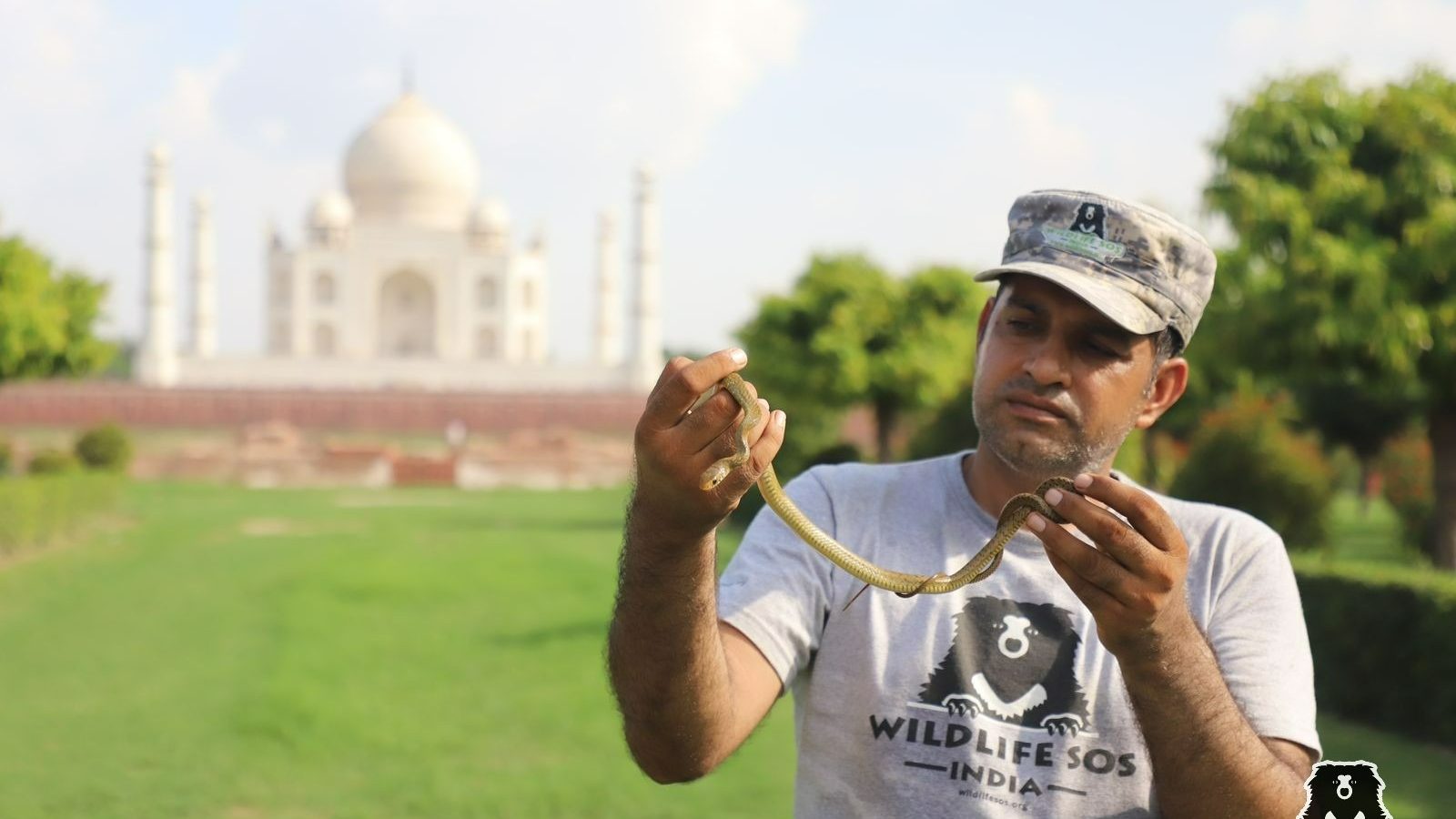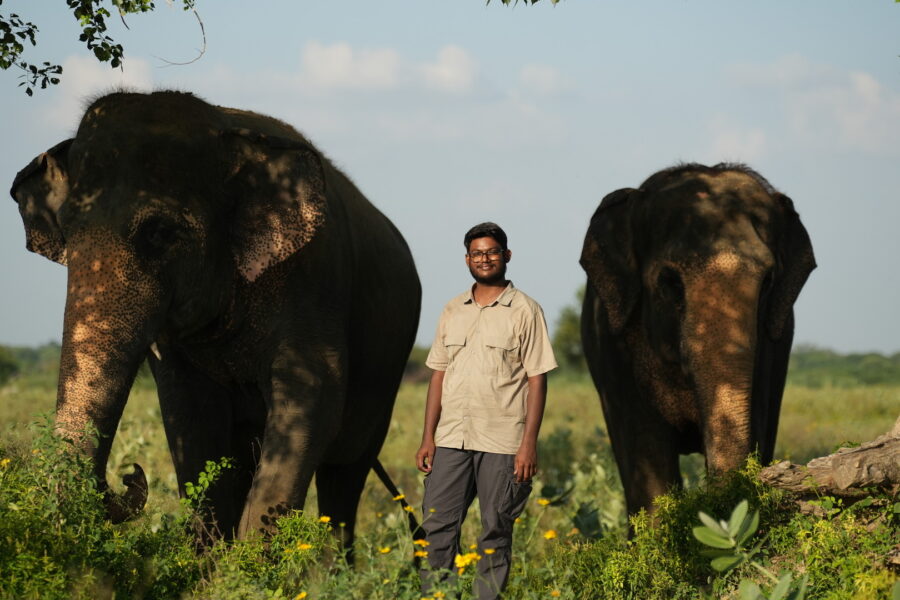Reptiles have been residents of this planet for millions of years, but habitat fragmentation due to anthropogenic activities poses several challenges to their survival. A new and comprehensive study has shockingly revealed that of the 10,196 reptile species across 24 countries including India, at least 1,829 or 21.1% are threatened with extinction.
Considering the urgent need to secure reptiles, Wildlife SOS has been working tirelessly to rescue those found in situations of distress. A result of this was reflected in the astounding total of 2,300 reptiles that were saved in 2023. These included crocodiles, turtles, snakes, as well as lizards. They were provided with a second chance at life after alarming calls were received on our 24×7 emergency rescue helplines across four regions in the country – Agra-Mathura, Delhi-NCR, Baroda, and Jammu and Kashmir.
Let’s take you through the intricacies of reptile rescues that our team professionally conducts on a daily basis.
What Happens When You Call
When a call describing an unusual sighting of a reptile comes in, we request the concerned caller to also send us an image, if possible, so that the species can be identified correctly. As a precautionary measure, we ask the informer, and the people present at the site to remain at a safe distance from the reptile. Since the rescue demands professional expertise, we never advise members of the public to hold a snake or large monitor, no matter how safe they believe it is. It is also crucial to remember that any kind of human interaction can be stressful for the animal.
Challenges at the Location
Our team, upon arriving at the location, carefully inspects the site. They are trained to handle reptiles in a way that prevents harm to the animal, the surrounding people, and the rescuers. Sometimes it takes our team hours to track the reptile, after which a strategic way to safely seize it is arrived at. Handlers are well-prepared for various potential outcomes, and often put their own lives at risk during this time. Another challenge that our team often confronts is the task of controlling the agitated public that tends to gather around the reptile, often to get a closer look or even to take pictures. This is bound to hassle the animal, which causes the situation to escalate, and an unwanted delay in the rescue.
In 2023, we observed the destructive impact of the Yamuna floods in the Delhi-NCR region, during which Wildlife SOS rescued several helpless animals. Among them were more than 100 reptiles, including species such as the Indian cobra, common Indian wolf snake, black-headed royal snake, Indian rat snake, checkered keelback, and Bengal monitor lizard.
Challenges in Handling the Reptile
As a defence mechanism, reptiles are likely to leap forward and bite in retaliation, or, if they feel threatened. To avoid situations where actions can lead to regrettable consequences, we strongly discourage people from handling reptiles independently. Large monitor lizards and snakes need to be skilfully dealt with to avoid any harm to the handler as well as the animal.
In the case of sighting a snake, the knowledge of species that exist in one’s environment is crucial to know if the serpent is venomous, and if it is one of India’s Big Four. Any direct skin contact with the serpent is therefore highly advised against. Snake handlers are most aware of the locality’s snake species. They ably use a snake hook so that a safe distance between them and the reptile can be maintained to prevent any potential attack. Using a snake hook also allows the snake to move freely without feeling restricted or threatened.
Saving monitor lizards from unexpected places too requires skilful handling. Members of our team are privy to the correct way of holding the lizard between the index and middle fingers so as to secure them carefully. Holding their tail is necessary as well to assure the safety of both the lizard and the handler. Since both snakes and lizards require a trained, firm hand for their rescue, we encourage you to reach out to the nearest forest official or a wildlife organisation in case a reptile is spotted in your surroundings.
2,300: The Sum Of All Parts
In the year gone by, tireless efforts led to the rescue of 2,300 reptiles across the cities our Rapid Response Units operate in, with Agra recording the highest number at 1,100! Among the most extricated species in Uttar Pradesh were turtles, with a total of 301. Other species included 244 Indian rat snakes, 137 common wolf snakes, 89 Bengal monitor lizards, 92 Indian rock pythons, 201 venomous spectacled cobras, 36 venomous common krait snakes, and 8 mugger crocodiles. One of the most intriguing reptile rescues that took place in Agra involved an Indian rock python that was found in the restroom of a research Institute. The staff was quick to reach out to Wildlife SOS, which helped our team to conduct a timely rescue and release of the snake.
Delhi-NCR’s Rapid Response Unit rescued nearly 350 reptiles in 2023. An unusual sighting promptly reported by an employee at a construction site had our team rush to the location. Here, a four-foot-long common krait was found, which was safely extricated, medically examined and then released into the wild. In another case from the capital region, a python was seen entangled in a net. Time was devoted to disentangle the snake gently, and the python was fortunately found with no injuries.
In Vadodara, Gujarat, almost 750 reptiles were saved, out of which one involved the remarkable rescue of an Indian rock python from a 60-foot-deep open well. Our Rapid Response Unit performed exceptionally by lowering one of its members into the well to seize the snake. A thorough examination was then conducted to make sure that it was fit for release.
The team in Jammu and Kashmir carried out special operations to rescue close to 130 reptiles. These included commonly found rat snakes and Himalayan trinkets, and the scarcely spotted Levantine viper, which is a venomous snake that is recognised for its adaptability to colder climates.
The new year has brought with it a reinvigorated spirit to minimise human-wildlife conflict situations by conducting safe rescues of animals from human habitations. As Wildlife SOS continues its mission to protect and conserve wildlife, we also urge our supporters to reach out to our Rapid Response Unit hotlines if you are in the following regions and have come across any distressed animal:
Delhi-NCR: +91-9871963535
Agra, Uttar Pradesh: +91-9917109666
Vadodara, Gujarat: +91-9825011117
Jammu And Kashmir: +91-7006692300 or +91-9419778280





